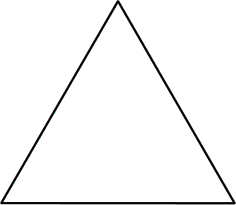09 SEP 2016 by ideonexus
 Childhood Fascination with What Adults Consider Mundane
Childhood Fascination with What Adults Consider Mundane
If you know kindergartners, you know that a thread on the carpet can become one of the most fascinating objects on the face of the earth. The child will pick it up and run her fingers the length of it, scrutinizing every centimeter of that thread. She might hold it up in the sunlight to get a better look and then lay it on her lap to continue the intense observation of the thread. Those who are sitting close to the thread scientist may notice this intriguing object and want in. So they’ll ...02 SEP 2016 by ideonexus
 "This Is Not a..." Game
"This Is Not a..." Game
A game called “Th is Is Not a...” encourages multiple solutions and is played in a relaxed environment that encourages creativity. Students pass around an object—such as a toy telephone—and say, “This is not a....” Younger students name an object that is not a toy telephone (for example, “This is not a pencil.”). Older students continue and say, “This is not a toy telephone, it is a...,” and they gesture or mime to suggest the object that they are pretending the toy teleph...05 FEB 2016 by ideonexus
 The Problem with Age-Segregation in Schools
The Problem with Age-Segregation in Schools
A new class of 6-year-old children will soon begin to share similar ways to think and behave. Then, next year, when they are 7 years old, most of those pupils will still remain in that group—and thus will tend to perpetuate those same patterns of activity. The next year, they will be 8-year-olds, but will continue to share many attitudes, values, and cognitive strategies. So as those children proceed through their K-12 grades, large portions of their ways to think will remain much like th...Folksonomies: education
Folksonomies: education
27 DEC 2013 by ideonexus
 Why Economists Will Continue to be Wrong
Why Economists Will Continue to be Wrong
Carter had initially used arbitrary parameters in his perfect model to generate perfect data, but now, in order to assess his model in a realistic way, he threw those parameters out and used standard calibration techniques to match his perfect model to his perfect data. It was supposed to be a formality--he assumed, reasonably, that the process would simply produce the same parameters that had been used to produce the data in the first place. But it didn't. It turned out that there were many ...They make models based on past data, and when they fail to predict the future, they adjust them to match the new past data. The problem is that so many models will match the past data, there could be no end to the number of models they throw out.
17 AUG 2013 by ideonexus
 Zhodani Religion
Zhodani Religion
Death, to the Zhodani, is not a complete ending. The "evil" (that is, failure of duty) of the individual spirit will be lost. The "good" of the spirit will merge for a time with the universal energy field, the Tavrian, and then return to another member of the race. The more dutiful the spirit, the more personality (and possibly even memory) will remain; this resembles reincarcation. An undutiful spirity will be diminished in proportion to its failures. However, actual demotion on the "chain o...Interesting concept, that our good survives to live more lifetimes, while our bad dies with us. The more good, the more of us to continue, while the more bad, the less we will exist. Similar to evolution, where our good survives into future generations.




